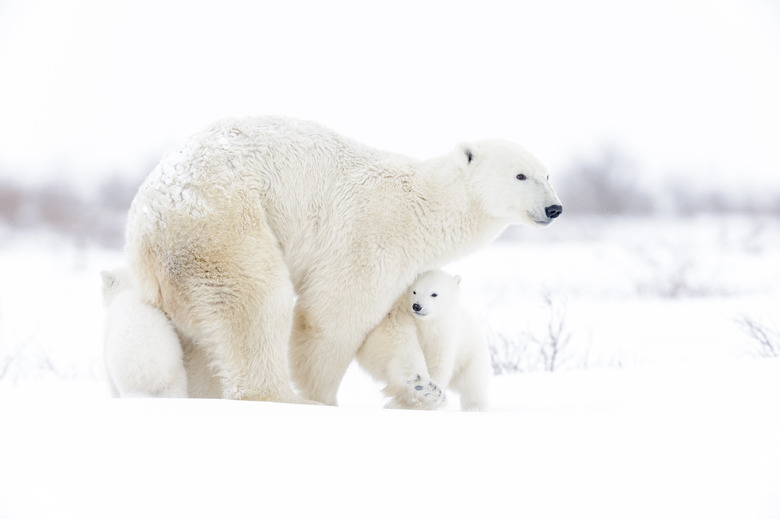How Do Plants & Animals Survive In The Arctic Tundra?
The Arctic tundra ecosystem, found in the far north polar area of the world, is characterized by cold temperatures, frozen soil called permafrost and harsh conditions for life.
Seasons
Seasons
The seasons in the Arctic tundra include a long, cold winter and a short, cool summer. In the winter, few plants and animals can survive, so many plants remain dormant through winter and many Arctic tundra animals hibernate or migrate at that time.
Plant Adaptations
Plant Adaptations
No trees grow in the Arctic tundra. The small plants of the tundra use the tactics of dormancy, only producing seeds every few years, turning with the sun to absorb energy and developing protective coverings.
Animal Adaptations
Animal Adaptations
Animals living in the Arctic tundra have developed adaptations including heavy winter coats, camouflage that changes color with the seasons, efficient body shape to prevent heat loss and the ability to build insulated tunnels underground.
Web of Interactions
Web of Interactions
The plants and animals of the Arctic tundra interact over large areas to create a food web that helps all of its members survive the harsh conditions.
Future Problems
Future Problems
Climate change may present a future problem for life in the Arctic tundra. Because they are so specialized to life in tundra conditions, many animals and plants may not survive if these conditions change.
Cite This Article
MLA
Coila, Bridget. "How Do Plants & Animals Survive In The Arctic Tundra?" sciencing.com, https://www.sciencing.com/do-animals-survive-arctic-tundra-5801980/. 13 March 2018.
APA
Coila, Bridget. (2018, March 13). How Do Plants & Animals Survive In The Arctic Tundra?. sciencing.com. Retrieved from https://www.sciencing.com/do-animals-survive-arctic-tundra-5801980/
Chicago
Coila, Bridget. How Do Plants & Animals Survive In The Arctic Tundra? last modified March 24, 2022. https://www.sciencing.com/do-animals-survive-arctic-tundra-5801980/
